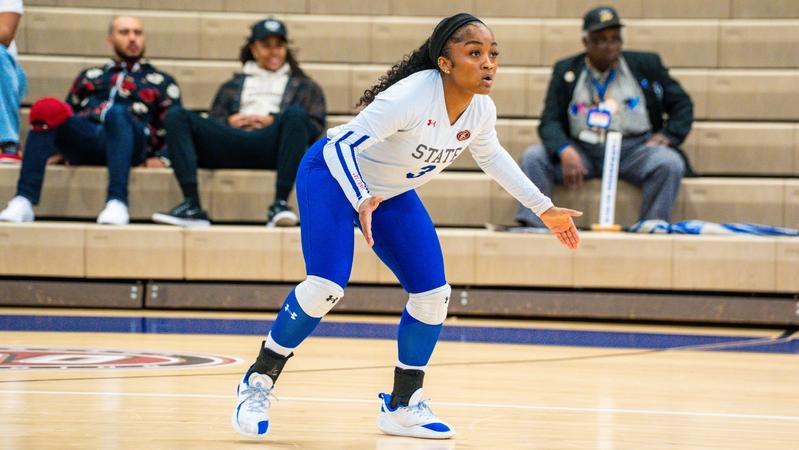Sports
Recruiting Has Begun for the High School Class of 2027
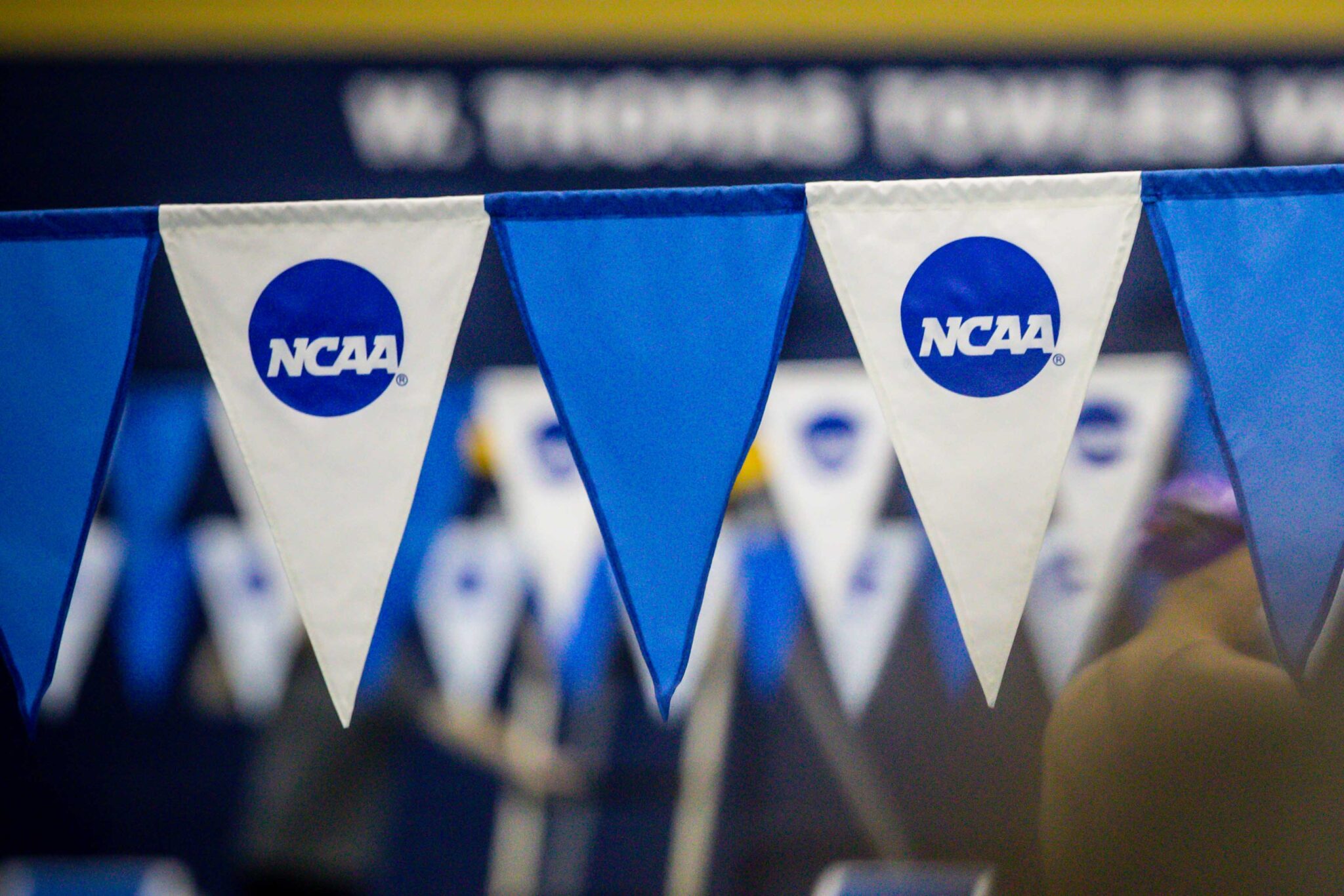
It’s Opening Day for recruiting for the high school class of 2027! (I don’t want to make you feel old but we’re talking about the college class of 2031.)
June 15, 2025, otherwise known as the first day of allowable athletic recruiting for rising high school juniors by NCAA Division I and Division II coaches, is finally here. Today, student-athletes in the class of 2027 can both initiate and receive communications –including email, text messages, social media messages, phone calls, and video calls– with college coaches. They can also make verbal commitments for the 2027-28 school year. (NCAA Division III coaches are not constrained by this rule; they can make contact and recruit year-round.)
Contact between coaches and prospective student-athletes, whether off-campus or on-campus (on-campus visits include both official and unofficial visits) may not begin until August 1st.
In the past, the NCAA has published separate recruiting calendars of allowable events for Division I baseball, women’s basketball, men’s basketball, football, men’s golf, women’s lacrosse, men’s lacrosse, softball, women’s volleyball, beach volleyball, and cross country/track and field. Recruiting timelines for all other Division I sports, including swimming and diving, are spelled out in a separate recruiting calendar.
As of today, the NCAA has only published the recruiting 2025-26 calendars for women’s and men’s basketball.
Each of the calendars lists the allowable and non-allowable contact periods for their respective sports. Over the last several years, the NCAA has sought to make the lives of prospective student-athletes and college coaches less stressful by curbing early recruiting (gone are the days when coaches were getting verbal commitments from 8th-graders) and giving coaches a break from year-round recruiting.
Contact Periods Defined
- Recruiting Period: Authorized athletics department staff may make in-person, off-campus recruiting contacts and evaluations.
- Quiet Period: A quiet period is that period of time when it is permissible to make in-person recruiting contacts only on the member institution’s campus. No in-person, off-campus recruiting contacts or evaluations may be made during the quiet period.
- Dead Period: A dead period is that period of time when it is not permissible to make in-person recruiting contacts or evaluations on or off the member institution’s campus or to permit official or unofficial visits by prospective student-athletes to the institution’s campus.
- Recruiting Shutdown: A recruiting shutdown is a period of time when no form of recruiting (e.g., contacts, evaluations, official or unofficial visits, correspondence or making or receiving telephone calls) is permissible.
Following the House vs NCAA settlement, the swimming and diving recruiting landscape will change in significant ways. To begin with, those schools that have opted into the agreement will have roster limits for 2025-26 and beyond. In most cases, this will mean fewer recruiting spots for the 2027-28 school year. On the other hand, the NCAA’s scholarship limits (14.1 per women’s team and 9.9 per men’s team) are no longer in effect and these schools will now be allowed –but not required– to offer full scholarships to every member of the team.
Class of 2027
The phones were likely ringing off the hook this morning for some of the biggest names in the high school class of 2027. Those include Luke Mijatovic, who has been named to Team USA for the upcoming World Aquatics Championships, and prospective members of the World Junior Championships squad: Audrey Derivaux, Brayden Capen, Collin Holgerson, Daisy Collins, Luke Vatev, Rylee Erisman, Shareef Elaydi, Thomas McMillan. In addition, the youngest members of the 2024-25 National Junior team will be on many coaches’ lists: Anthony Dornoff, Colin Jacobs, and Mia Su.
Other top recruits from the cohort include Davis Jackson, Ellis Crisci, Griffin Oehler, Hayden Vicknair, Joey Campagnola, Juan Vallmitjana, and Trent Allen; as well as Abby Chan, Adalynn Biegler, Alyssa Ton, Bianca Nwaizu, Blakely Hammel, Carly Afanasewicz, Chloe Teger, Emily Wolf, Nikki Nixon, Sadie Buckley, Sarah Paisley Owen, and Vivienne Zangaro.
Top 2027 boys, alphabetically:
| Athlete | Hometown |
| Anthony Dornoff | Cerritos, CA |
| Brayden Capen | Lisle, IL |
| Colin Jacobs | Bradenton, FL |
| Collin Holgerson | Chattanooga, TN |
| Davis Jackson | Raleigh, NC |
| Ellis Crisci | Lawrence, KS |
| Griffin Oehler | Rockville, MD |
| Hayden Vicknair | Signal Mountain, TN |
| Joey Campagnola | Seminole, FL |
| Juan Vallmitjana | Fort Lauderdale, FL |
| Luka Mijatovic | Pleasanton, CA |
| Luke Vatev | Clarendon Hills, IL |
| Shareef Elaydi | Santa Clara, CA |
| Thomas McMillan | Saint Charles, IL |
| Trent Allen | Carmel, IN |
Top 2027 girls, alphabetically:
| Athlete | Hometown |
| Abby Chan | Madison, AL |
| Adalynn Biegler | Big Lake, MN |
| Alyssa Ton | Fountain Valley, CA |
| Audrey Derivaux | Haddonfield, NJ |
| Bianca Nwaizu | Irvine, CA |
| Blakely Hammel | Jacksonville, FL |
| Carly Afanasewicz | Pearl River, NY |
| Chloe Teger | Villa Park, CA |
| Daisy Collins | Chapel Hill, NC |
| Emily Wolf | Fishers, IN |
| Mia Su | Sunnyvale, CA |
| Nikki Nixon | Raleigh, NC |
| Rylee Erisman | Windermere, FL |
| Sadie Buckley | Fairfax, VA |
| Sarah Paisley Owen | Atlanta, GA |
| Vivienne Zangaro | Long Beach, NY |
In past years, there was a recruiting dead period during “signing week,” which began on the second Wednesday in November. But with the dissolution of the National Letter of Intent program following the House settlement, it is unclear if there will still be a dead period in November. We can assume the following shutdown periods will remain in place:
Swimming and Diving Recruiting Shutdown Periods
- One week in August
- The final 14 days of December
- The first week of January
- The third and fourth weeks in February during the most popular period for conference championships
(NOTE: If you have a commitment to report, please send an email with a photo (landscape, or horizontal, looks best) and a quote to [email protected]. Do not leave it in the comments.
Sports
2026 Men’s Track & Field Season Preview

Over his first two campaigns, Caleb Smith has produced successful efforts in the heptathlon and decathlon events. He broke the school record in the heptathlon, posting his best total of 4,952 points to win the Middlebury Winter Classic. A few weeks later, Smith paced the event at the Division III New England Championships to earn all-region accolades and qualify for the NCAA Championships. He translated that success to the decathlon, winning the title at the Carla Coffey Invitational and Williams’ Farley Interregional Extravaganza. He garnered All-NESCAC accolades with a third-place showing in the high jump and claimed all-region honors in the decathlon.
Sam McGarrahan returns after a superb season in the field events. He qualified for the NCAA Indoor Championships in the high jump, clearing the bar with the 18th-best height at 1.95 meters. McGarrahan topped the podium in the event during the Division III New England Championships, soaring to a school-record effort of 2.05 meters. He also set the program mark in the long jump, leaping 6.81 meters at Middlebury’s New England Small College Invitational. McGarrahan became the NESCAC Champion in school-record fashion in the high jump (2.00 meters) and recorded a third-place leap in the long jump. His high jump efforts outdoors earned him all-region honors.
Sports
Multiple athletes earn all state volleyball honors

For the first time since the 2018-2019 season, all three schools advanced past the Area round of the playoffs. Archer City and Holliday both were Regional Semifinalists, while Windthorst was a State Semifinalist for the fourth-straight season. With that success comes state recognition Holliday senior Jordan Peters closed out her final season as a Lady Eagle with an All-State honor from the Texa…
Sports
Cedar Rapids wrestler chases her dream, from a volleyball player to a young star in the sport

CEDAR RAPIDS, Iowa (KCRG) – When Maggie Peters is home, she’s locked in.
She lifts weights at a gym in her hometown of Cedar Rapids. But it’s not just for strength – it’s for safety.
“One things goes wrong, and you’ve got people’s lives in your hands,” she said. “I mean, you don’t want to drop somebody on their head.”
But more often than not, Peters is on the road. Her sport is professional wrestling.
She’s performed performed in front of thousands in arenas and on television. Her fights may be scripted, but her dream of reaching WWE is real.
Peters has a background in volleyball, playing at Cedar Rapids Jefferson, Kirkwood Community College and Mount Mercy. But her dream has always been in the wrestling ring.
“I wanted to do it right when I started watching I wanna say I was eight or nine I would just go wrestle on my trampoline,” Peters said.
She went from the volleyball court at Mount Mercy to a wrestling school in Davenport.
“We would have a show on a Thursday night, so I would leave class early,” said Peters. “But at that point, I will say, my senior year was my worst year of school. Once I got the wrestling training done, I was like, ‘ooh, this is what I want to do.’”
In professional wrestling, the winner and loser are predetermined, unlike traditional sports.
“Pro wrestling, I will say, is like a dance,” Peters said.
But there’s nothing fake about the pain wrestlers endure, what they call “bumps.”
“Any time you get put down on the mat, you’re taking a bump. You’re hitting the top of your back,” Peters said. “Higher on your neck, sometimes, (is) not good.”
Maggie wrestles in independent shows across the Midwest under the ring name Maggie Lee. She also performs in front of thousands in TNA Wrestling as the villainous character “M By Elegance.”
“Yeah, I do like being the bad guy,” Peters said. “I’ve worked a mix of both the bad guy and the good guy on the independents. But everybody was like, ‘you look more like you as the bad guy.’ I was like, ‘gee, thanks,” Peters said.
TNA – Total Nonstop Action – is high-level televised professional wrestling, one step below WWE.
“I actually really love the whole TV aspect. It’s very organized. Being able to see myself on TV is really cool,” Peters laughed.
Maggie hopes a full-time contract with WWE is next. She’s banking on it, writing a card to her mother labeled “open when I’m in the WWE.”
“And it was one of many letters. I made them for her birthday,” Peters said.
When asked about the letter’s contents, Peters said she doesn’t remember what she wrote as a girl.
“I don’t even remember what’s in it, so I’m kind of like scared,” she said. “When she does open it, I feel like it’s going to be a big deal and I might get embarrassed.”
Sometimes she’s flying high, sometimes she’s taking bumps.
Either way, she’s racing towards her dream.
Copyright 2025 KCRG. All rights reserved.
Sports
Men’s Volleyball vs Jessup on 1/6/2026 – Box Score
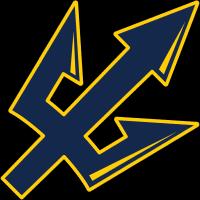
Sports
Former CU volleyball star Sis Tebrake glad to be back in Omaha
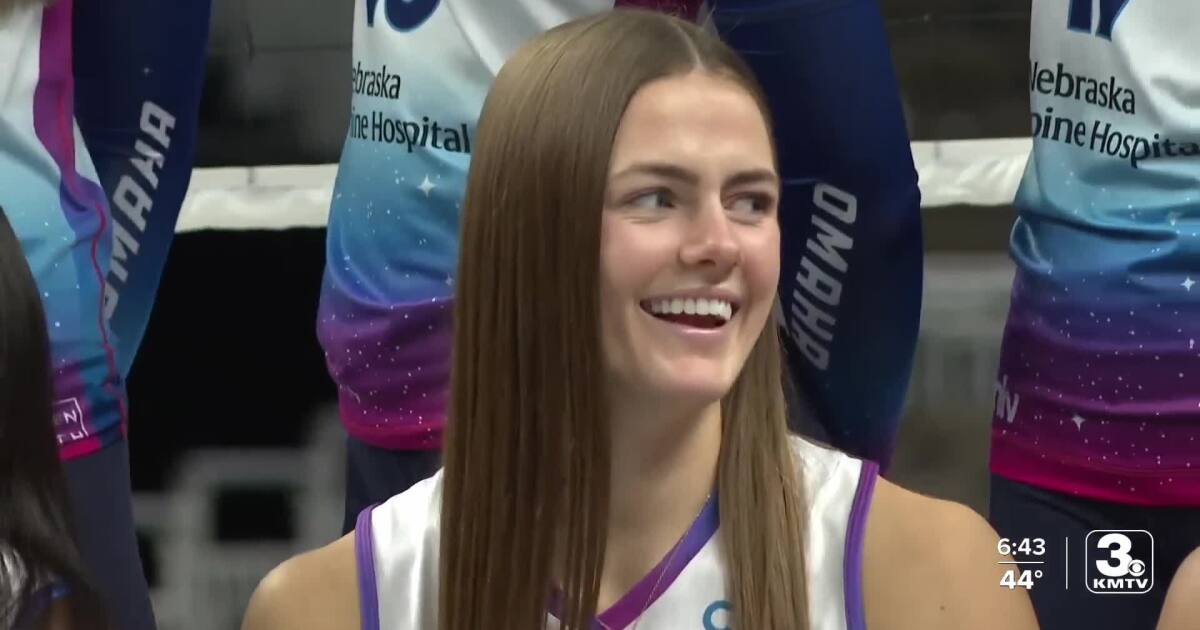
OMAHA (KMTV) — She might have a new name, but Norah (Sis) Tebrake still brings the same infectious smile to the court.
The former CU volleyball star is now married to former Creighton baseball standout Dylan Tebrake.
“He’s always encouraging me and challenging me,” said Norah. “And I try to do the same for him. I think it’s such a cool dynamic.”
After spending her first pro season helping Orlando to a league title, Norah had now returned to Omaha to play for the Supernovas. But returning to her hometown actually did take some getting used to again.
“I’m a wimp when it comes to the cold,” Tebrake said. “But now coming back after spending just one winter away, I feel like I can’t handle the cold.”
Along with reuniting with some former Bluejays, Tebrake has also formed friendships with her former rivals and now current teammates, including ex-NU star Merritt Beason.
“She’s just so joyful and leads with so much grace and so much love,” said Beason. “You can see that in her play. She’s one of the best people that I’ve ever met and it’s been so fun getting to know her.”
“To have people that know just kind of what makes you tick and what you need on the court and off the court is super helpful,” Tebrake said. “Obviously we’re all learning that about each other but just to come in knowing that there’s people that already know that about me has been super comforting.”
The Novas host San Diego in the season opener on Thursday at 7 PM at CHI Health Center.
Sports
South Shore High School Girls Volleyball All-Scholastics for 2025
Jan. 7, 2026, 4:01 a.m. ET
After a strong 2024 fall season, high school girls volleyball on the South Shore had an even better one in 2025.
There were two local state-championship-winning teams on the court this year. Oliver Ames finished off the best season in program history by winning it’s first-ever Division 2 state title in it’s second ever appearance (which came last season). On the same day, East Bridgewater followed that up with a program-first of their own, winning it’s first-ever Division 4 state championship in it’s first appearance.
-

 Rec Sports3 weeks ago
Rec Sports3 weeks agoPrinceton Area Community Foundation awards more than $1.3 million to 40 local nonprofits ⋆ Princeton, NJ local news %
-

 Sports3 weeks ago
Sports3 weeks agoBeach Volleyball Unveils 2026 Spring Schedule – University of South Carolina Athletics
-

 Sports2 weeks ago
Sports2 weeks agoBadgers news: Wisconsin lands 2nd commitment from transfer portal
-
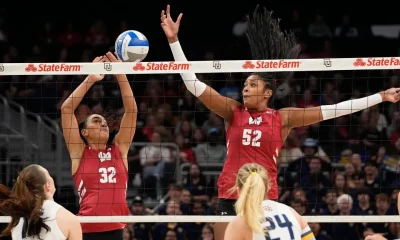
 Sports3 weeks ago
Sports3 weeks agoBadgers news: Final Four Game Thread vs. No. 1 Kentucky Wildcats
-

 Rec Sports5 days ago
Rec Sports5 days agoFive Youth Sports Trends We’re Watching in 2026
-

 Sports2 weeks ago
Sports2 weeks agoIs women’s volleyball the SEC’s next big sport? How Kentucky, Texas A&M broke through
-

 Sports3 weeks ago
Sports3 weeks agoFour From Women’s Volleyball Named to College Sports Communicators Academic All-District Team
-
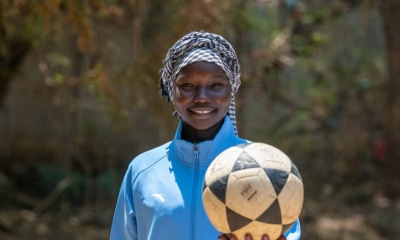
 Rec Sports3 weeks ago
Rec Sports3 weeks agoRefugee-Focused Youth Sport Initiatives : Moving for Change
-
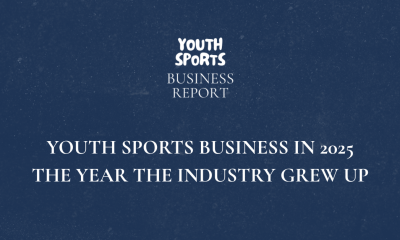
 Rec Sports3 weeks ago
Rec Sports3 weeks agoYouth Sports Business in 2025: The Year the Industry Grew Up
-
Rec Sports3 weeks ago
Inside the NWSL’s first combine: Can the league create a more robust pathway for American talent development?




































